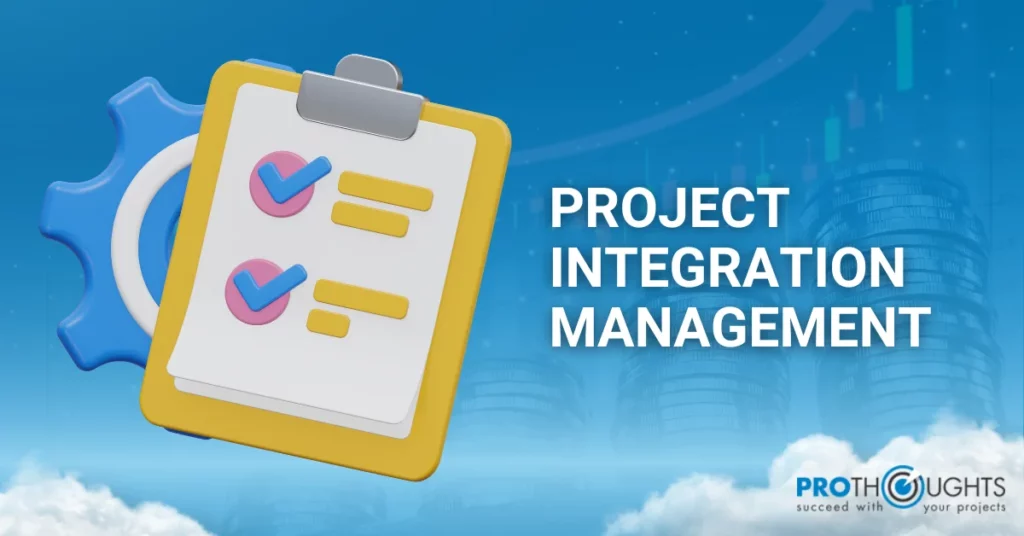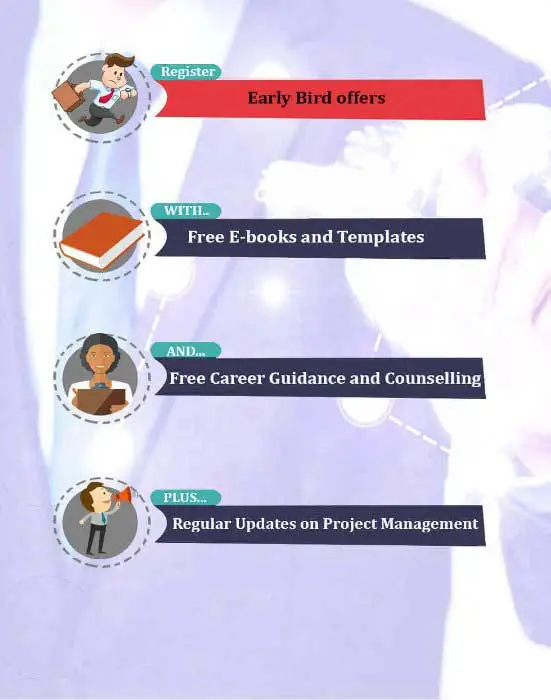
Beginning the project can be a complex task, nevertheless, the adoption of the right processes makes things easily manageable. Integration Management Project is the cornerstone of project management the well-being of all the parts. Through this article, we will disclose seven classical processes of Project Integration Management that each project manager should be aware of. All processes, from creating a project charter to closing the project, are essential to ensuring the ultimate project success. The PMP Certification or you simply looking to upgrade your project management knowledge, comprehending these processes is a must. Together let us discover the project integration management world and how with the knowledge you will acquire you can improve your project management skills.
What is Project Integration Management?
Integration management project is one of the ten areas of knowledge that come from the standards of PMI and PMBOK. It reflects the mechanisms of task and activity identification, specification, integration, and connection organization of project management processes and activities within the project management process groups. Also, it is comprised of all the elements of a project converging and running smoothly to save the project from chaos.
On top of that, project integration management encompasses the development of the project charter, and project management plan to other project documents as well. It also covers directing and managing the actual implementation through monitoring and controlling project work, managing integrated change control, and closing the project or phase.
Why is Project Integration Management Important?
A project manager has to coordinate multiple schedules, time, cost, and resource aspects during the project. Quality should be warranted, and the customers and the principal actors should be delighted!
Also, a suitable integrating management tactic that will be able to track and balance all these diverse elements in what is needed will be used to attain the required outputs. For instance, the project scope might suddenly change, necessitating a course correction which will lead to schedule delays and cost overruns. Furthermore, with an integration strategy in place, things could get out of hand quickly.
Here’s what can be achieved through integration management:
- Organize and list out processes and tasks.
- Allocate responsibilities to team members.
- Shared resources and their overlapping schedules are managed.
- Work efficiency within teams is enhanced.
A well-formulated integration plan can make sure that all project components are to improve efficiency and, therefore, boost productivity and you can learn all about it in our PMP certification online training.
7 Processes in Project Integration Management
Step 1: Project Charter Development
The project charter is a document that authorizes the existence and gives a project manager the liquidity to apply organizational resources to project activities. It constitutes the first step in project initiation. Also, the most significant role of a project charter is to express the goals, limits, stakeholders, and methodology of a project appropriately. Additionally, this metric is a reference point for the project and it gives a general overview of what the project is about and what the main factors of its success are.
-
Role of Project Integration Management in Charter Development
Integration management ensures that the development of the project charter aligns with the organization’s strategic goals and objectives. It involves understanding the broader context in which the project exists. Additionally, integration management coordinates input from various stakeholders during the charter development process. Moreover, it sets the stage for the development of subsequent project management documents, like the project management plan. It ensures that the information captured in the charter is consistent with the overall plan for project execution.
On the other hand, Project Integration Management serves the purpose of making the project charter more than just an isolated artifact but an integral part of the project management framework. It integrates different elements, associates them effectively with organizational goals, and establishes a platform for the completion of the project in a successful manner.
Step 2: Project Planning
-
Significance of Comprehensive Planning
Encompassing planning guarantees that resources such as (a) time, (b) budget, and (c) person will be effectively allocated. This reduces the probability of the occurrence of resource shortages or overruns through a master planning of resource consumption. Complete planning allows us to drive all uncertainty and risks. It thus provides for the building up of coping and emergency measures that prevent the consequences of incidents not foreseen. Moreover, a well-composed project management plan unites all acts with the projects’ objectives and in this way, every activity brings a contribution to the general goal. Thus, the integration fortifies the compactness of the project, which in turn increases its success chance. Secondly, it supplies project managers and investors with a clear understanding of the likely consequences and possible outcomes of decisions.
Along with this, project teams must undertake comprehensive project planning, which forms a strong foundation, aligns tasks with objectives, and enables efficient resource management.
Step 3: Project Execution
-
Monitoring Progress and Adjusting
Regular monitoring of project progress involves comparing actual performance against the planned schedule and milestones. This ensures that the project maintains its course and identifies deviations early. Utilizing key performance indicators (KPIs) and other metrics helps assess the project’s performance. In addition, this includes measuring factors such as cost efficiency, schedule adherence, and quality of deliverables. The project manager fosters a culture of continuous improvement, learning from experiences, and applying insights to enhance future project phases. Moreover, keeping thorough records of progress, changes, and outcomes is essential during execution. This documentation serves as a valuable resource for project evaluations, audits, and future planning.
Step 4: Change Control Management
-
Importance of Change Control
The control of change is one of the principal keys to ensuring project stability by introducing a structured method of reviewing, approving, and introducing changes. Unmanaged changes can lead to increased costs and project delays. Furthermore, change control helps reduce the risks that come with making changes to the project. An adequate change control process includes tracking of all changes either approved or disapproved. This project documentation as a record of history will provide clues to the prehistory of the project serving as an inspiration for accountability. On the other hand, they aid the public in becoming aware of changes in the plan of action, time schedules, and impacts, which enhances trust and transparency among community members.
However, change control management is critical for maintaining project stability, managing risks, and ensuring that modifications align with project objectives. Hence, structured procedures for handling changes contribute to effective integration, allowing projects to adapt while maintaining overall cohesion.
Step 5: Risk Management
-
Integrating Risk Management into the Overall Project
To integrate risk management into the overall project, ensure that risk identification, assessment, and response strategies align with the project’s objectives. This will guide the work that is imputed towards the objectives of the plan. Furthermore, this encompasses changes in schedules, resource allocations, and other factors to ensure the proper incorporation of risk management activities. The integration of the project risk management approaches is a constant process that necessitates the evaluation during the project life cycle. To begin with, successful integration implies a clear and open atmosphere of communication with all parties concerned. Updating stakeholders on identified hazards, reaction tactics, and project plan changes keeps them informed and engaged.
In addition, risk management is one of the crucial components of project management which engages identification, evaluation, and response to any possible risk.
Step 6: Performance Monitoring and Control
-
Monitoring and Controlling Project Progress
Regularly measuring and comparing actual progress against the established baselines helps identify variances. This involves tracking completed activities, milestones, and overall project advancement. EVM is a method for measuring project performance that integrates scope, schedule, and cost. Moreover, it provides a comprehensive view of project health by comparing the value of work performed to the planned value. In addition, monitoring project progress includes assessing the quality of deliverables. Quality control measures ensure that project outputs meet the predefined quality standards and adhere to specifications.
This cyclic process enhances the project’s health, facilitates timely adjustments, and makes it possible to have a good project.
Step 7: Project Closure
-
Evaluating Project Success
The project measures its impact by achieving specified goals. This involves checking that the deliverable’s objectives were met on time, within the budget, and of a high standard. Satisfying the primary stakeholders of the project which are the clients, team members, and management is a major pillar in project success. Besides, assessments help to clarify the causes which resulted in deviations.
In the meantime, the project closure involves completing deliverables, measuring the success of the project, and identifying the lessons learned. Comments integrated into organizational knowledge space foster a culture of continuous learning, where past successes inform future projects.
Conclusion
Achievement of step-by-step project integration in seven steps can guarantee effective project implementation. Objectives being defined, the fullness of planning, evaluation of risks, communication perfection, components’ integration, progress monitoring, and efficient closing are basics for project success. In that case, are you confident and fully prepared to improve your project management abilities? Enroll today in PMP certification to get started!



